#lord charles cornwallis
Text
La Fayette and the Monarchy – a Summary
La Fayette’s relationship with the Monarchy, both in France and elsewhere in Europe, was often a rather strained one. While he was not opposed to the institution of the monarchy as such, he often found himself at odds with the ruling families. But regardless of the times and the relationship then existing between La Fayette and Europe’s crowned heads – there was almost always also a certain comedic or even ironical element to it.
So here is a little list of some of La Fayette “best moments”:
La Fayette insulted the future Louis XVIII (and angered his father-in-law in the process)
La Fayette on the future William IV (aka the “Royal Little Tar”)
La Fayette trying to apologize to Louis XVI after going against his direct orders not to sail to America
La Fayette at a dinner party with Lord Cornwallis, Frederick, Duke of York and Frederick the Great
La Fayette featured in rather explicit prints with Marie Antoinette
Queen Charlotte’s approval of La Fayette’s imprisonment
La Fayette’s descendant currently sits on the Belgian Throne
… to be continued
#marquis de lafayette#la fayette#french history#american history#american revolution#french revolution#marie antoinette#louis xvi#louis xviii#lord charles cornwallis#frederick duke of york#frederick the great#history#french monarchy#belgium monarchy#british royal family
61 notes
·
View notes
Text
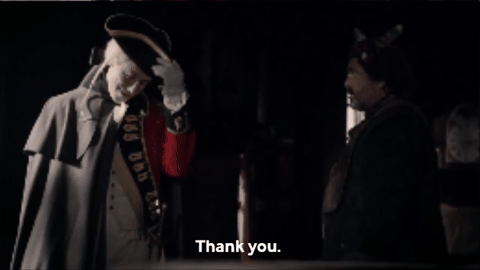


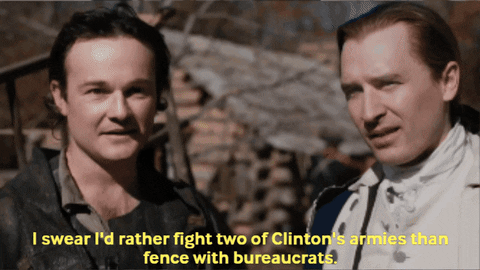



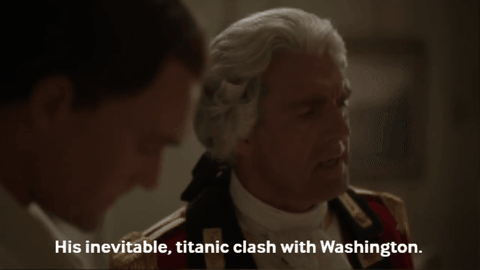
Full General Sir Henry Clinton in TURИ (Mentions)
Grand Knight Cross of Bath, Commander-in-Chief, He Who History Frowns Upon
TURN and Henry Clinton [ 1 / ? ]
#history#amrev#turn: washington's spies#sir henry clinton#gifs#gifset#my gifs#benedict arnold#lord charles cornwallis#turn amc#american revolution#period drama
3 notes
·
View notes
Text
Me trying not to go on a rant about how after the war in America ended General Cornwallis went on to have an illustrious career as admittedly one of the better people in the late 18th century Irish government (but only due to not being Cooke or Carhampton) and how he was instrumental to creating the Union but was then forced to resign over Catholic emancipation (this will inevitably turn into a rant about how I would genuinely kill George iii if I ever got my hands on him) every single time one of my Amrev mutuals mentions him

#same with hoche and my frev mutuals. frev tumblr did you know that lazare hoche dying stopped wolfe tone from getting a fleet to ireland#charles cornwallis#lord carhampton#edward cooke#george iii#1798 rebellion#jory.txt
5 notes
·
View notes
Text
American Foreign Policy Since 1945
The United States of America, with its founding in 1775 and winning the American Revolution or, more accurately, a British civil war which lasted until 1783 over the 19th 1781 with the surrender of General Lord Charles Cornwallis
The United States of America, with its founding in 1775 and winning the American Revolution or, more accurately, a British civil war which lasted until 1783 over the 19th 1781 with the surrender of General Lord Charles Cornwallis surrendered 7087 officers and 900 seamen hundred and 40 cannons 15 galleys a frigate and 30 transport vessels.
During the day of the surrender, General Cornwallis…
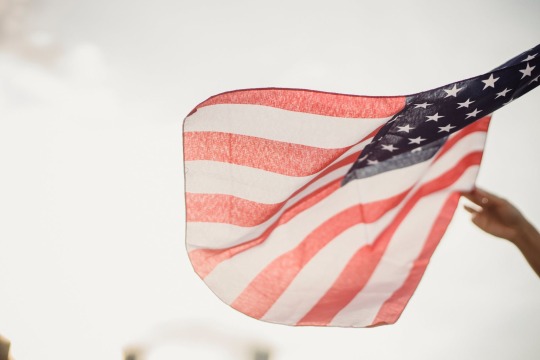
View On WordPress
#America History#American Foreign Policy#American Mexican War#Bill Clinton#Charles CornWallis#Confederate States of America#European History#French Revolutionary War#George H. W. Bush#George Washington#History#Lord Cornwallis#Robert E Lee#Treaty of Paris
1 note
·
View note
Text
Evening Dress, ca.1865, designed by dressmaker Madame Vignon of Paris. Silk.
The Cohasset Historical Society.

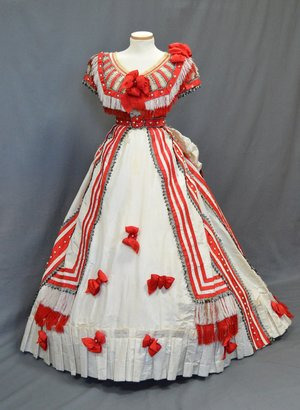
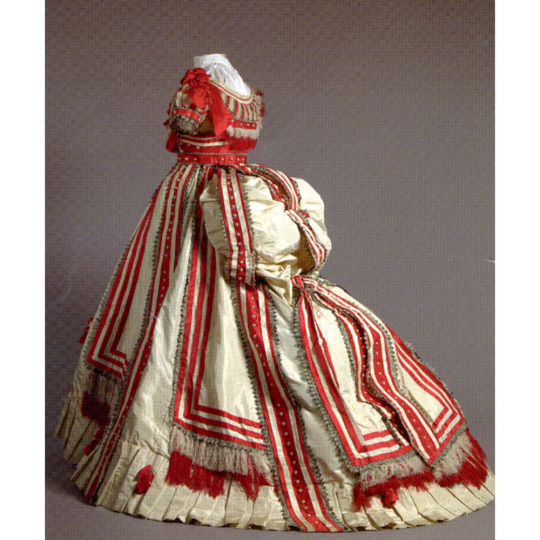
Maria Barnes Hooper, wearer
Maria Barnes was born in 1827 in Hingham, Mass., to parents Ensign Barnes Jr. and Deborah Lincoln. The Lincoln family has notable members of American History, including Major General Benjamin Lincoln, who served under George Washington in the Revolutionary War and received British commander Lord Charles Cornwallis’ surrender at Yorktown, and Abraham Lincoln, the 16th President of the United States.
Maria married John Sewell Hooper, a stationary merchant, in Hingham in 1852. The Hoopers applied for a passport in 1865 that shows the couple and their young son traveling to France. Family legend states that Maria purchased this dress for $100 (about $1,800 today) from Madame Vignon, a renowned Parisian dressmaker. Vignon also created the wedding dress and trousseau for the French Empress Eugenie, wife of Napoleon III.
#I found more photos of this dress so here they are!#victorian#victorian era#victorian fashion#19th century#fashion history#historical fashion
796 notes
·
View notes
Text

Captain Sir Edward Brace, circa 1769-1843, by Thomas Stewardson, 1816
Brace entered the navy in 1781, became Lieutenant in 1792, Commander in 1797 and Captain in 1800. In 1803 he became flag-captain to Admiral Cornwallis. He held commands at home and later in the Mediterranean until the end of the war with France. In 1816 he took command of the ‘Impregnable’ in Lord Exmouth’s squadron at the bombardment of Algiers where the ship was badly damaged because she failed to anchor in her proper station. He died while Commander-in-Chief at the Nore.
He is wearing captain’s full dress uniform of the 1812–25 pattern, with the CB (Companion of the Bath), the Order of Wilhelm of the Netherlands, St Maurice and St Lazarus of Sardinia, and Charles II of Spain. He faces the sitter and wears a cloak with a red lining over his uniform and a fur collar. Painted in 1816–17, a later inscription upper right gives his name, his rank as rear-admiral, dates and position at the Nore. In the upper left corner are his arms as knight, probably also a later addition.
#naval art#naval history#persons of the navy#captain sir edward brace#early 19th century#history#age of sail#uniform#royal navy
52 notes
·
View notes
Text


─ •✧ WILLIAM'S YEAR IN REVIEW : APRIL ✧• ─
1 APRIL - William and King Charles planted a tree marking the end of Queen's Green Canopy.
8 APRIL - William and George attended the Premier League Aston Villa V Nottingham Forest match at Villa Park.
9 APRIL - William, Catherine and their three kids attended the Easter Mattins Service at St. George's Chapel.
20 APRIL - William and Catherine were received by Sir David Thompson (Deputy Lieutenant of West Midlands).at the Indian Streatery in Birmingham. Afterwards, Mr. Lawrence Barton (Deputy Lieutenant of West Midlands) received them as they gave a Reception at the Rectory. William also appeared in a video supporting the #NoButts Campaign.
24 APRIL - William received Mr. Alastair Martin (Secretary of the Duchy of Cornwall).
25 APRIL - William was received by Colonel Jane Davis (Vice Lord-Lieutenant of Greater London) as he attended the Anzac Day Dawn Service and laid a wreath at Wellington Arch.
26 APRIL - He was represented by Lieutenant Commander James Benbow RN at the Funeral of Mr. Bryn Parry (Co-Founder, Help for Heroes).
27 APRIL - William and Catherine were received by Mr. Peter Vaughan (His Majesty's Lord-Lieutenant of Mid Glamorgan) as they attended a training session with Central Beacons Mountain Rescue Team to mark their Sixtieth Anniversary. They later, picked up dinner foreveryone from the Little Dragon Pizza Van as they visited Dowlais Rugby Club.
28 APRIL - William and Catherine were received by His Majesty's Lord-Lieutenant of Mid Glamorgan (Mr. Peter Vaughan) at the Aberfan Cemetery and afterwards. Later, they visited the Aberfan Disaster Memorial Garden and met local people who were involved in the disaster.
29 APRIL - Kensington Palace released a new portrait featuring Catherine and William to mark their 12th Wedding Anniversary.
#review april#review 2023#year in review : william#william review : april#year in review 2023 : william#year in review : 2023#british royal family#british royals#royalty#royals#brf#royal#british royalty#prince of wales#the prince of wales#prince william#royaltyedit#royalty edit#my edit#my photoset#princess of wales#the princess of wales#princess catherine#kate middleton#catherine middleton#duchess of cambridge#princess kate#royal family#duke of cambridge#prince and princess of wales
51 notes
·
View notes
Text
The English were so petty, I can’t stop laughing. Research for writing purposes is fun!
youtube
youtube
youtube
#fic: anti hero#battle of Yorktown#american revolution#18th century#1780s#revolutionary war#amrev#amrev history#history#18th century history#late 18th century#turn: washington's spies#turn washington's spies#turn amc#amc turn#benjamin tallmadge#ben tallmadge#george washington#marquis de lafayette#alexander hamilton#Charles Cornwallis#history research#research#historical references#american history#french history#english history#european history#writing historical fiction#research is fun
55 notes
·
View notes
Note
Celta, talk about a freudian slip. Camilla's new pick for her book club is a 2007 novel entitled "The Lords' Day" by Michael Dobbs, which is about Charles & Camilla being taken hostage inside Parliament during the State Opening. Some people say it's Camilla's sense of humor on display in picking this novel but from the readings you & MWT have done, I think it's also a subtle way of Camilla saying "I don't want to be Queen!" If Camilla didn't want to be Queen, why did she marry Charles? Baffling.
Hi Nonny,
My goodness. That seems like a very odd choice for a book club pick. It strikes me as rather egocentric to pick a book that has you in it as a character, However, it could just be Camilla's sense of humour, as you mentioned.
I believe that while Camilla is loving the power of being Queen (as per her PR articles last year that were all about how wonderful she is, something that she could not do before). she does not like the work involved with the position of Queen Consort and would have been much happier if she had remained the King's mistress for all of her life.
As for why Camilla married Charles when he was the Prince of Wales, knowing that she would be Queen Consort one day? I don't know.
I think part of it has to do with how she was brought up, in the days when marriage was considered to be the life goal of every woman and divorce marked you as a failure and a disgrace (think of other women you know who are her age, born around 1947, just after the end of WW2 and when rationing was still in effect in the UK). Those values don't change as the world around you changes unless you make a concerted effort to change them.
Part of it may also be a genuine affection for King Charles and not wanting to lose him from her life, which imo is what would have happened if she had turned down his marriage proposal.
Part of it may also be that being Queen Consort was something that was going to happen in the distant future, while being the Duchess of Cornwall, a role she could manage very nicely, was what would happen when she married.
Whatever the reasons were, and only Camilla knows them for sure, she is now Queen Consort and she has to make her peace with that and find some way of carrying out her role that works for her and the general public.
EDIT: From the comments, this makes a lot of sense:
"Reportedly she wasn't being treated with respect as a mistress, go figure, so they married..."
20 notes
·
View notes
Text
The Priory School
Published in 1904, this is the final story we're covering from Return.
It is also our first story set in the reign of Edward VII, who was a rather different monarch to his mother to put it mildly.
So, the Duke of Holdernesse's biography. Brace yourself, because this is going to need a few points to cover:
There have been a total of 40 dukedoms created in the English peerage; some of them have been recreated over the centuries after dying out due to lack of a male heir (they are nearly always male only) or the holder ends up becoming King, in which case the dukedom "merges in the Crown" and is free for further use. For example, Prince Philip was made Duke of Edinburgh as a wedding present when he married the future Elizabeth II. When he died, Prince Charles inherited the dukedom but didn't use it as he was already Prince of Wales. King Charles III then gave the Duchy to his brother Edward as a 59th birthday present, but made it life only. I will mention Edward again later.
Not counting the Duke of Cornwall, the title being explicitly linked to the oldest son of the monarch i.e. Prince William, the oldest active dukedom is Norfolk, currently with its 18th holder, Edward Fitzalan-Howard. He also holds the hereditary title of Earl Marshal, in that capacity organising both the funeral of Elizabeth II and the coronation of Charles III, something made a good deal harder when he got a six-month driving ban for driving through a red light while on his mobile. His lawyer managed to get a good part of the hearing done in private because the mitigation stuff involved discussing sensitive coronation details.
KG stands for "Knight of the Garter". Below the Victoria and George Crosses, the latter of course not yet a thing, this is the most prestigious honour you can get in the honours system. It typically goes to royals domestic and foreign, top officials including Prime Ministers and those who have done major works for the monarch personally. However, notable other cases include Sir Edmund Hilary i.e. the Everest chap. At the time, the Government made appointments, but to stop the honour being used for patronage, since 1946, the sole appointer has been the head of the order i.e. the monarch.
I could go on about the Garter, but we'll be here all day.
PC stands for Privy Counsellor, a formal group of senior advisors to the monarch, that includes top politicans. They still have a function, including intelligence sharing and can use the title "Right Honourable" even if they aren't. Some have in fact been kicked out recently for criminal convictions.
If you have multiple titles, your oldest legitimate son is allowed to use one of the junior ones as a courtesy title. Hence Lord Saltire. Pivoting back to Prince Edward, his oldest son James, aged 15, uses the title Earl of Wessex, his father's wedding present and will inherit that from his father. As a monarch's grandson, he will have the right to call himself a prince when he turns 18.
This said, it is perfectly possible for a kid to become a Duke in his own right. The other Prince Edward became Duke of Kent in 1942 aged just six when his father died in a plane crash.
Lord Lieutenants are official deputies of the monarch in the various 'ceremonial counties' (as British local government is now rather complex). They used to have a role leading the local militias and still play a role in selecting low-level judicial officials, but their main job is giving out medals and opening stuff. They also have deputies below them, who are the people you write to if you want a royal to open something.
Hallamshire was a historical area in what is now South Yorkshire, no longer a county by this point, that covers an area roughly the same as the modern-day City of Sheffield.
Preparatory schools or "prep schools" are fee-paying schools designed to prepare children for the Common Entrance Examination to get into one of the public schools like Eton or Fettes. They are frequently, but not always, boarding schools.
Yes, 13 May 1901 was a Monday.
An Eton jacket is a short (waist-length) jacket with three buttons. Outside the military, where it forms part of mess dress, it's now far more associated with service staff.
Heidegger shares his name with a German philosopher, Martin Heidegger, who had yet to come to prominence at the time. A Nazi supporter, he has the interesting distinction of being the only then-living philospher mentioned in the "Bruces' Philosophers Song" by Monty Python.
An "ordnance map" refers to the Ordnance Survey maps. Originating in 1745, when maps of Scotland were created to assist in putting the Jacobite clans then in rebellion against the government, these have been the standard maps for ramblers, the military etc. for generations and can be used to trace changes in places over time. The ones from before 1970 are now public domain and available online.
The bicycle track deductions have been debated to death by Holmesian scholars over years; Klinger covers their analysis in some depth. Doyle himself admitted he wasn't quite right.
It was a legal requirement for the details of the landlord of a pub to have their details prominently displayed at the entrance. By tradition, that was and still is above the door. However, since 2003, you legally just need the premises licence on display.
The Capital and Counties Bank had 473 branches across the UK until its 1918 acquistion by Lloyds Bank, still the largest retail bank in the UK.
Britain had "felony murder" like the US until 1957. Since Wilder is involved in the kidnapping, he would be just as liable as Hayes for the murder of Heidegger and could face the death penalty with him.
This became a matter of huge controversy in the 1953 case of Derek Bentley, also known as the "Let him have it" case. Bentley allegedly delivered those words to his accomplice in a burglary, Christopher Craig, a 16-year-old who then shot dead a police officer. Bentley himself had mental development problems with a IQ recorded of 77. Both were found guilty of murder and Craig spent ten years at "Her Majesty's Pleasure" as a juvenille offender. A recommendation for mercy in the case of Bentley was ignored by the judge and when the appeal failed, the Home Secretary David Maxwell Fyfe (who had also overseen a major increase in the persecution of gay men) declined to commute the sentence, despite 200 MPs calling for it. Bentley was hanged, but the continuing outcry was a key factor in the 1964 abolition of capital punishment in England and Wales. Bentley would get a posthumous royal pardon in 1993 and the Court of Appeal quashed his murder conviction in 1998 on the grounds of the flawed trial.
#letters from watson#sherlock holmes#the priory school#prio#acd canon#history#factoids#knights of the garter
27 notes
·
View notes
Photo

Battle of Camden
The Battle of Camden (16 August 1780) was a major battle of the southern theater of the American Revolutionary War (1775-1783). It saw a British army under Lord Charles Cornwallis decisively defeat an American force under General Horatio Gates, thereby securing British control of South Carolina and allowing Cornwallis to invade North Carolina.
Background: Fall of Charleston
On 29 March 1780, over 12,000 British and German soldiers under the command of Sir Henry Clinton dug in outside the landward walls of Charleston, South Carolina, and began to lay siege. Over the course of the next six weeks, the British siegeworks crept closer to the city walls, as the ubiquitous roar of artillery echoed in the sky. Charleston was, at the time, the largest and most important city in the American South. Its capture would provide the British with a base from which to launch an invasion of the South, one of the most economically significant regions of the United States. The exports of southern cash crops such as indigo, rice, and tobacco were used to fund the American war effort; should the South fall back under British control, the US would lose access to this major source of revenue and would be less capable of military upkeep. The amputation of the South from the body of the United States would, it was believed, be the fatal blow to the young republic.
This was a fact that Major General Benjamin Lincoln, commander of the Southern Department of the Continental Army, knew all too well. As the British completed their entrapment of his army in Charleston, Lincoln knew that time was running out for both his army and the South, and he could only hope that help was on its way. General George Washington, commander-in-chief of the American forces, was unable to come to Lincoln's aid himself, as he was currently in New Jersey with the main army keeping an eye on the sizable British force in New York City. However, Washington was able to spare two regiments of Continentals (or regular soldiers), sending them south under the capable command of Major General Johann de Kalb. Simultaneously, the 380 troops of the 3rd Virginia Regiment under Colonel Abraham Buford crossed into South Carolina, intent on coming to Charleston's defense.
But before either of these detachments could arrive to reinforce the city, Lincoln's hand was forced. By early May, Clinton's siegeworks had approached the city walls, allowing the British to unleash an artillery barrage that engulfed the wooden buildings of Charleston in flames. Unwilling to subject his army and the city's residents to further carnage, Lincoln surrendered on 12 May; at least 2,500 Continentals were taken prisoner (the British reported over 5,000 prisoners), and Charleston was occupied by the British. Clinton then set about pacifying the state of South Carolina, offering pardons to any Patriot militiamen willing to change sides and fight for the British; as a result, the British were able to recruit nearly 4,000 men for their Loyalist militias over the summer.
Clinton also dispatched Lt. Colonel Banastre Tarleton, and his infamous unit of elite Loyalists known as the British Legion, in pursuit of Colonel Buford's Virginians. On 29 May, Tarleton attacked Buford at the Battle of Waxhaws on the border between North and South Carolina. The battle quickly devolved into a bloodbath, as Tarleton's troops allegedly massacred the Continental soldiers while they were trying to surrender; this led the Patriots to coin the phrase ‘Tarleton's Quarter' to refer to the brutality of British officers. With the elimination of Buford's regiment, the last remnants of the American southern army had been destroyed, leaving the South open to British subjugation.
Satisfied with this outcome, Clinton returned to New York City in early June, leaving his second-in-command, Lord Charles Cornwallis, in charge of finishing the pacification of South Carolina. This was easier said than done, as the brutality of Waxhaws inspired hundreds of men to join Patriot militias that were sprouting up across the South Carolina backcountry. Men like Thomas Sumter, Francis Marion, and Andrew Pickens led small bands of partisan fighters on attacks against British and Loyalist troops, frustrating Cornwallis' attempts to solidify his authority in the region. As the weeks wore on and Cornwallis' grip on South Carolina began to slip, the Patriots spotted a chance to regain control of the state. But to do so, they would have to rebuild their southern army fast.
Continue reading...
19 notes
·
View notes
Text
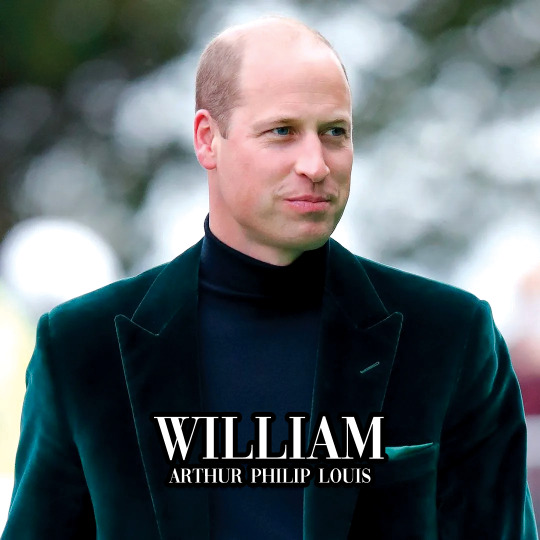




The Working Royals of the British Royal Family: A Series
Full name: William Arthur Philip Louis
Title: His Royal Highness The Prince of Wales (Duke of Cambridge, Earl of Strathearn, Baron Carrickfergus, Duke of Cornwall, Duke of Rothesay, Earl of Carrick, Baron of Renfrew, Lord of the Isles, Prince and Great Steward of Scotland, Earl of Chester)
Place in the line of succession: First (1)
Birth: 21 June 1982 at St Mary's Hospital, London
Current Age: 41
William is the eldest child of King Charles and the late Diana Spencer. He is the first heir to attend university, having studied at the University of St Andrews, which is also where he met his wife, Catherine Middleton. William married in 2011 and has three childre - Prince George, Princess Charlotte and Prince Louis. Since becoming a full time working royal, William has been instrumental in the creation of several projects, notably The Earthshot Prize and Homewards
41 notes
·
View notes
Text

Such sad news to hear today. An amazing, and enigmatic actor someone who deserved to be called a star.💫
British actor Tom Wilkinson, best known for his role in The Full Monty, has died aged 75 💔Wilkinson, who became an OBE for services to drama in 2005, was born in Leeds - Yorkshire in 1948 and grew up in Canada and Cornwall before attending the Royal Academy of Dramatic Art (Rada) in the 1970s.
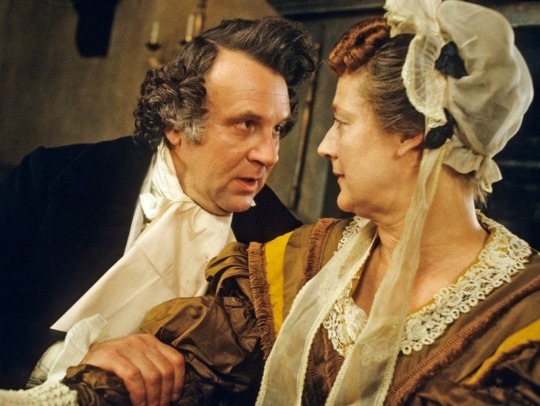
In 1994, he appeared as Pecksniff in the BBC's adaptation of Charles Dickens's Martin Chuzzlewit. He is pictured alongside Maggie Steed.
Across an illustrious career spanning nearly 50 years, Wilkinson won a host of acting awards, as well as two Oscar nominations. He won a BAFTA for 'The Full Monty,' and he also appeared in 'Shakespeare in Love,' 'In the Bedroom,' 'The Best Exotic Marigold Hotel' and 'Batman Begins', He won an Emmy and a Golden Globe for his role as Benjamin Franklin in the 'John Adams' miniseries. A versatile actor won acclaim through decades of work in television and film and onstage. Recently he was reunited with his The Full Monty co-stars, Carlyle and Mark Addy, in a Disney+ series of the same name.
Who remembers this classic!
The original 1997 comedy about an unlikely group of male strippers in Sheffield won an Oscar for Best Original Musical or comedy score and was nominated for three others, including best picture and best director.
Wilkinson’s best roles. Here are his finest films, Lieutenant General Lord Charles Cornwallis was an officer of the British Army and one of the leading British generals in the American War of Independence.
Wilkinson played a British officer in The Patriot, a US film about the Revolutionary War co-starring Mel Gibson, Heath Ledger and Jason Isaacs. The film was nominated for three Academy Awards.
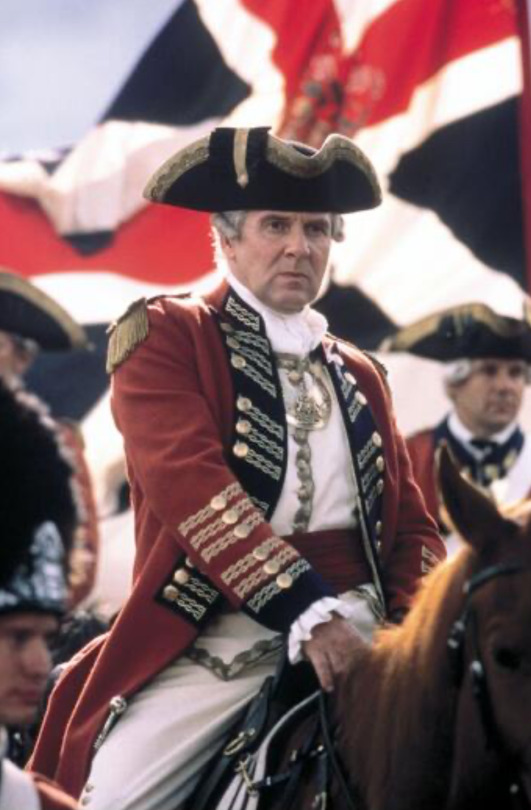
From The Full Monty to Michael Clayton: was a lawyer - Arthur Edens - in Michael Clayton film 🎥 co-starring George Clooney. Tom Wilkinson was nominated for Academy Awards for Best Actor in a Leading Role for In The Bedroom in 2001, and Best Actor in a Supporting Role for Michael Clayton in 2007.
Wilkinson was winning acclaim again as a high-powered lawyer who has a breakdown in Tony Gilroy’s “Michael Clayton.” He was nominated for another Academy Award for his performance in that film.

In ‘Denial’, Confronting a Holocaust Revisionist in Court. Denial is a drama about a historian’s pursuit through the UK justice system by a Holocaust denier. It stars Rachel Weisz, Tom Wilkinson, Timothy Spall, Andrew Scott, Jack Lowden, Caren Pistorius and Alex Jennings.
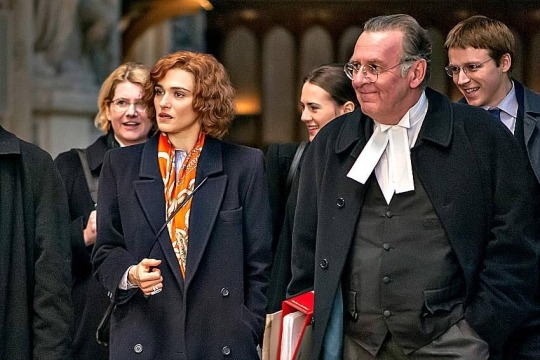
On television, he played Benjamin Franklin in “John Adams,” James A. Baker in “Recount,” for which he was Emmy-nominated and Joseph P. Kennedy, Sr. in “The Kennedys.”
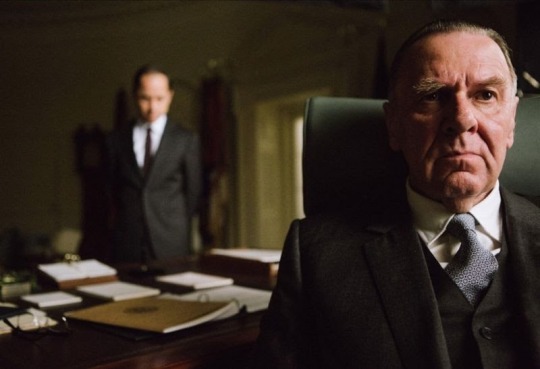
In Ava DuVernay's 2014 historical drama Selma, Wilkinson portrayed President Lyndon B Johnson. The film tells of the protest marches held in Alabama in 1965 over voting rights for African Americans.
RIP Tom Wilkinson 💔 1948-2023
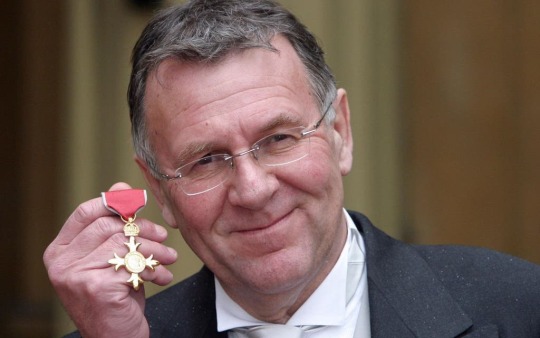
16 notes
·
View notes
Text
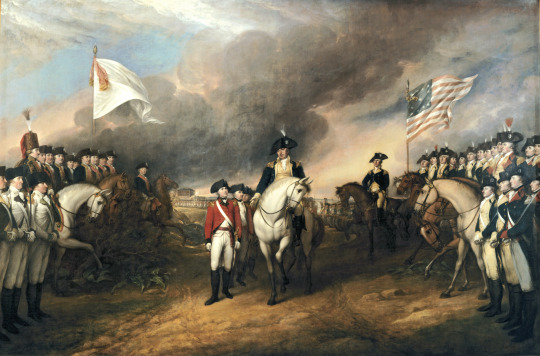
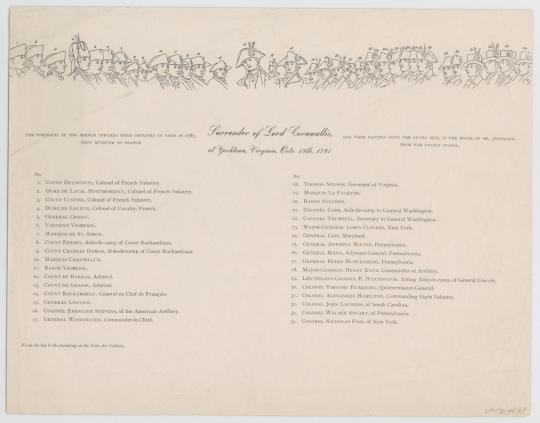

The Surrender of Lord Cornwallis is an oil painting by John Trumbull. The painting was completed in 1820 and hangs in the rotunda of the United States Capitol in Washington, D.C.
The painting depicts the surrender of British Lieutenant General Charles, Earl Cornwallis at Yorktown, Virginia, on October 19, 1781, ending the siege of Yorktown, and virtually guaranteeing American independence. Included in the depiction are many leaders of the American troops that took part in the siege. [X]
#otd#on this day#us history#history#art#john trumbull#american revolution#revolutionary war#american war of independence#united states of america#united states history#october
97 notes
·
View notes
Text
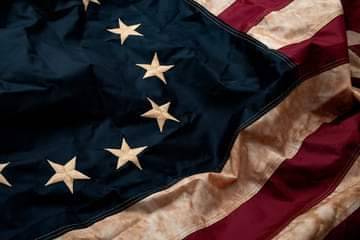

REMEMBER FORT GRISWOLD!!
This was a rallying cry during the Battle of Yorktown, the final struggle of the American Revolution. What is Fort Griswold? What horrors happened on September 6th, 1781 to earn the respect of the troops? It is also personal to my family, as my wife has a direct ancestral family connection to this conflict.
Let's examine the events leading up to the Battle of Fort Griswold, also known as the Battle of Groton Heights. After turning coat, Benedict Arnold received a commission as a brigadier general in the British army as part of the deal that he made in order to betray his country.
In August 1781, George Washington decided to shift forces in order to attack the army of Lt. Gen. Lord Charles Cornwallis in Virginia. Washington began pulling troops from the New York area. Lt. Gen. Sir Henry Clinton, the British commander-in-chief in America, realized on September 2 that Washington’s tactics had deceived him, leaving him unable to mobilize quickly enough to help Cornwallis. Further, there was still a significant force of Continentals facing him in front of New York, and Clinton did not feel that he could detach troops to reinforce Cornwallis as a result.
Instead, Clinton decided to launch a raid into Connecticut in the hope of forcing Washington to respond. Clinton intended that this be a raid, but he also recognized that New London on the Thames River could be used as a permanent base of operations into the interior of New England. Clinton appointed Arnold to command the raid because he was from Connecticut and knew the terrain.
Arnold commanded about 1,700 British solders, divided into two battalions. Lt. Col. Edmund Eyre commanded a battalion consisting of the 40th and 54th Regiments of Foot and Cortland Skinner’s New Jersey Volunteers, a Loyalist unit. Arnold himself commanded the other battalion, made up of the 38th Regiment of Foot and various Loyalist units, including the Loyal American Regiment and Arnold’s American Legion. Arnold also had about 100 Hessian Jägers, and three six-pound guns. This was a formidable force anchored by the three Regular regiments.
Arnold and his command sailed from New York City on September 4. The British fleet anchored about 30 miles west of New London to make its final preparations, and then sailed for New London late on September 5, hoping to make a nighttime landing. Fortunately for the defenders of New London, the winds did not favor Arnold’s plan, and the British force did not arrive until daylight on September 6.
Rufus Avery, a Continental officer stationed at Fort Griswold, on the opposite side of the Thames River, and positioned on commanding high ground, witnessed the arrival of the British:
“… about three o’clock in the morning, as soon as I had daylight so as to see the fleet, it appeared a short distance below the lighthouse. The fleet consisted of thirty-two vessels…. I immediately sent word to Captain William Latham, who commanded [Fort Griswold], and who was not far distant. He very soon came to the fort, and saw the enemy’s fleet, and immediately sent a notice to Col. William Ledyard, who was commander of the harbor, Fort Griswold, and Fort Trumbull.”
43-year-old Lt. Col. William Ledyard commanded Forts Griswold and Trumbull. Ledyard, a Connecticut militia officer, quickly sent a messenger to notify Gov. Jonathan Trumbull and to muster troops. He then went to Fort Griswold to assume command of its defenses. The fort’s guns fired twice to signal the enemy approach, and a British ship answered with a third shot, changing the meaning of the signal to suggest the arrival of a victorious friend, thereby confusing the local militia commanders and delaying the mustering and deployment of their troops.
Fort Griswold began being constructed in late 1775 in response to the outbreak of hostilities. It was completed in 1778, and was known as “Groton Fort.” It sits atop a high hill and could bombard any ship attempting to enter the Thames River or the town of New London. Approximately 165 Connecticut militiamen manned its defenses, organized into two companies, and a detachment of the 8th Regiment of Connecticut Militia. Ledyard and his soldiers faced a stern task—they were badly outnumbered by veteran British troops including Regulars of some of the best regiments in Clinton’s army.
A British officer described Fort Griswold’s defenses:
“The fort was an oblong square, with bastions at opposite angles, its longest side fronting the river in a north-west and southeast direction. Its walls were of stone,and were ten or twelve feet high on the lower side, and surrounded by a ditch. On the wall were pickets, projecting over twelve feet; above this was a parapet with embrasures, and within a platform for cannon, and a step to mount upon, to shoot over the parapet with small arms. In the south-west bastion was a flag-staff, and in the side near the opposite angle, was the gate, in front of which was a triangular
breast-work to protect the gate; and to the right of this was a redoubt, with a three-pounder in it, which was about 120 yards from the gate. Between the fort and the river was another battery, with a covered way, but which could not be used in this attack, as the enemy appeared in a different quarter today.”
Six-pound cannons bristled from the western side of the fort, overlooking the Thames. The northern side by the main entrance was level and played a major role in the coming battle.
At sunrise on September 6, British troops landed on both sides of the mouth of the Thames River. Arnold’s battalion of 800 men occupied New London with no resistance. The 23 soldiers manning Fort Trumbull on the New London side of the river fired a single volley, spiked their guns, and then fled across the river to Fort Griswold. Shapley lost 7 men wounded while Arnold’s troops sustained four or five casualties. After chasing off the defenders of Fort Trumbull, Arnold’s troops entered the town and began destroying supplies and naval stores. Parts of the town were spared, but when a storehouse that contained a large supply of gunpowder was set ablaze, the resulting explosion triggered a huge fire that consumed 143 buildings in New London.
Lt. Col. Edmund Eyre’s battalion of 800 Regulars and Loyalists landed on the east bank of the Thames River, facing tangled woodlands and swamps. The New Jersey Loyalists, in fact, had so much difficulty moving the artillery that they did not participate in the assault on Fort Griswold.
Eyre sent a Captain Beckwith to the fort under a flag of truce to demand its surrender. Ledyard called a council of war and consulted with his officers. The Americans believed that a large force of militiamen would answer the call, and that this augmented force could defend the fort. Ledyard responded by sending an American flag to meet the British flag bearer. The American told Beckwith, “Colonel Ledyard will maintain the fort to its last extremity.” Displeased by the response, Eyre sent a second flag, threatening no quarter if the militia did not surrender. Ledyard gave the same response even though some of the Americans suggested that they should leave the fort and fight outside instead.
Arnold ordered Eyre to assault the fort, assuming that it would be taken easily. Once he reached a hill that allowed him to see the entire fort, Arnold realized that the stout fort would not fall easily. Arnold tried to recall Eyre, but it was too late. The British assault was about to begin in earnest.
Eyre split his force. Some moved to the southern side of the fort while others went around the east side to the northern face. A diversionary force feinted toward the western side. Naval captain Elias Halsey, an experienced artillerist, manned the main cannon on the eastern face of the front as Eyre’s troops approached Ledyard ordered his men to hold their fire until the first British detachment arrived at a point that gave his men the best opportunity to kill as many as possible. As the British moved to assault the fort, Halsey pulled the lanyard on his 18-pounder loaded with grapeshot. Twenty British solders fell to the ground, either dead or suffering from ghastly wounds from being torn apart by the grapeshot. Halsey’s well-aimed shot tore a gaping hole in the British line, but the well-disciplined Regulars closed ranks and filled that gap, continuing their advance.
Sgt. Stephen Hempstead of Ledyard’s command recounted, “When the answer to their demand had been returned … the enemy were soon in motion, and marched with great rapidity, in a solid column … they rushed furiously and simultaneously to the assault of the southwest bastion and the opposite sides.”
The large force of British soldiers moved on the southwest bastion under heavy fire from the fort’s defenders. The British officers goaded their men on toward the ramparts of the fort, even though their men were suffering heavily at the hands of the defenders. Colonel Eyre fell mortally wounded, and was carried from the field.
Maj. William Montgomery of the 40th Regiment of Foot was now the senior British officer. He led his men forward in solid column formation, and advanced on the east side of the fort. Montgomery ordered an attack on the eastern redoubt. Ledyard’s Nutmeg State men stoutly resisted, inflicting heavy losses on the British attackers. The Regulars attempted to scale the 12-foot high ramparts, but were cut down. As the men of the 40th Regiment poured over the top of the walls, defender Jordan Freeman, an African-American free man formerly owned by Colonel Ledyard, killed Montgomery with a long pike. The enraged Regulars then killed Freeman to avenge the death of their commander.
The concentrated fire of the British Regulars cut the fort’s main flag from its stand, which the British soldiers construed as the flag being struck in surrendering the fort. Thinking they had won the day, the rushed the main gate of the fort, only to receive a thunderous volley of shot and shell. The enraged Regulars tried to open the fort’s main gates to allow the rest of their comrades to enter, but a sheet of musket fire cut many of them down—supposedly, the first man to try to open the gate was killed instantly by a musket ball to the brain. Some of the British troops forced the gate open, and the Regulars poured into the fort.
Despite losing their two highest-ranking officers in the assault on the fort, the British carried the day. However, their successful assault now set the stage for the tragedy that followed.
With British soldiers pouring into the fort, Colonel Ledyard ordered a ceasefire and prepared to surrender Fort Griswold to the victorious British. However, the British disregarded the ceasefire and continued pouring fire into the American garrison, killing or wounding nearly all of the fort’s defenders. “I believe there was not less than five or six hundred men of the enemy on the parade in the fort,” claimed American soldier Rufus Avery. “They killed and wounded nearly every man in the fort as quick as they could.”
Maj. Stephen Bromfield, the ranking British officer after Montgomery fell, called out, “Who commands this fort?” Ledyard stepped forward and responded, “I did, sir, but you do now.” Another American, Jonathan Rathbun, watched Bromfield run Ledyard through the heart and lungs with Ledyard’s own sword:
“…the wretch who murdered him [Ledyard], exclaimed, as he came near, “Who commands this fort?” Ledyard handsomely replied, “I did, but you do now,” at the same moment handing him his sword, which the unfeeling villain buried in his breast! Oh, the
hellish spite and madness of a man that will murder a reasonable and noble-hearted officer, in the act of submitting and surrendering!”
Another African-American soldier, Lambo Latham, avenged Ledyard’s death by killing the British officer responsible for Ledyard’s death.
Ledyard fell, and those nearest to him tried to support the dying colonel. Capt. Peter Richards, seriously wounded, but still on his feet, held Ledyard while others moved forward to try to avenge their fallen commander. The British cut them all down with their bayonets, with some receiving as many as 30 stab wounds.
In the meantime, on the southwest side of the fort, some of the Regulars turned one of the fort’s cannons on its defenders and opened fire, killing Capt. Adam Sharpley and another officer.
“Never was a scene of more brutal wanton carnage witnessed than now took place,” recalled American Stephen Hempstead. “The enemy were still firing upon us… [until] they discovered they were in danger of being blown up.” Rufus Avery believed that the attack was called off due to the chance that further musket fire might set off the fort’s powder magazine.” Hempstead noted, “After the massacre, they plundered us of everything we had, and left us literally naked.”
Horrified by the carnage around him, a British officer demanded that the butchery end. “Stop! Stop!” yelled the officer. “In the name of heaven I say stop! My soul cannot bear it!” The officers soon regained control of their men, and the slaughter soon ended.
The best explanation for the massacre of the fort’s defenders by the British was an angry reaction to the casualties taken by them after the fort’s colors were shot down, leading the British to believe that the fort had surrendered. Furious at the continued resistance after the supposed surrender, the British punished the American defenders in an atrocity.
They killed and wounded every man they possibly could… one mad looking fellow put his bayonet to my side, swearing “by Jesus he would skipper me!” I looked him earnestly in the face and eyes, and begged him to have mercy… he put his bayonet three times into me… I think no scene ever exceeded this for continued and barbarous massacre after surrender. (Rufus Avery’s account of the storming of Fort Griswold by British regulars, September 6th 1781).
American casualties were appalling: 85 killed, 35 wounded and paroled, 28 taken prisoner, 13 escaped, 1 captured and released (12 year old William Latham, Jr.). Total: 162. British losses numbered 48 killed and 145 wounded.
An American named F. M. Calkins reported that American dead were loaded into a cart and were carried away from the fort:
“About twenty soldiers wee then employed to drag this wagon down the hill, to a safe distance from the expected explosion. From the brow of the ridge on which the fort stood, to the brink of the river, was a rapid descent of one hundred rods, uninterrupted
except by the roughens of the surface, and by scattered rocks, brushes, and stumps of
trees. The weight of the wagon after it had begun to move, pressing heavily upon the soldiers, they let go their hold, and darting aside, left it to its own impetus. On it went, with accelerated velocity, surmounting every impediment, till near the foot of the hill,
when it came against the trunk of a large apple-tree, with a force that caused it to recoil and sway round. This arrested its course, but gave a sudden access of torture to the sufferers. The violence of the shock is said to have caused instant death to some of them;
others fainted, and two or three were thrown out to the ground. The enemy, after a time, gathered up the bleeding men, and carried them into a house near by, belonging to Ensign Avery, who was himself one of the party in the wagon. The house had been previously set on fire, but they extinguished the flames, and left the wounded men there on parole, taking as hostage for them, Ebenezer Ledyard, brother of the commander of the fort.”
The British lit a trail of gunpowder that they hoped would destroy Fort Griswold’s magazine, but a daring militiaman entered the fort and extinguished the fire, leaving the fort intact. The British then loaded their prisoners onto their ships and withdrew, leaving chaos in their aftermath.
This was the final major battle in the northern theater of the American Revolution. General Clinton praised Arnold’s “spirited conduct”, but also complained about the high casualty rate suffered by Arnold’s forces—about a quarter of the troops sent to attack Fort Griswold became casualties. A British observer likened the fight for Fort Griswold to the debacle at Bunker Hill. Many British soldiers blamed Arnold for the losses at Fort Griswold, even though he was not present on the battlefield. Arnold next proposed a raid on Philadelphia, but Cornwallis’ surrender at Yorktown the next month ended the active fighting of the American Revolution.
Today, Fort Griswold is a Connecticut state park. The fort’s earthen works are well maintained. There are monuments to both Montgomery and Ledyard within the boundaries of the fort. The site of the former barracks located in the fort is marked. Large gates bear the names of all of the American defenders who fell defending Fort Griswold. The Groton Monument, erected in 1830, towers 130 feet over the battlefield in commemoration of the fort’s gallant defenders, and a plaque affixed to the monument provides:
THIS MONUMENT WAS ERECTED UNDER THE PATRONAGE OF THE STATE OF CONNECTICUT, A.D. 1830, AND IN THE 55TH YEAR OF THE INDEPENDENCE OF THE U.S.A. IN MEMORY OF THE BRAVE PATRIOTS, WHO FELL IN THE MASSACRE AT FORT GRISWOLD, NEAR THIS SPOT, ON THE 6TH OF SEPT. A.D. 1781, WHEN THE BRITISH, UNDER THE COMMAND OF THE TRAITOR, BENEDICT ARNOLD, BURNT THE TOWNS OF NEW LONDON AND GROTON, AND SPREAD DESOLATION AND WOE THROUGHOUT THIS REGION.
There is a small museum nearby that includes artifacts and a detailed diorama and model of the British assault on Fort Griswold. It is well worth the visit. One can also hike up the spiral staircase of the 130 foot obelisk to view the fort and battlefield through the small windows at its pinnacle. (I did this in the hot and humid summer and was very thankful to be back on the ground).
The Battle of Groton Heights is largely overlooked and forgotten today but was nevertheless an important battle, representing the final significant combat in the northern theater of the Revolutionary War. It also represents the only battle where Benedict Arnold faced his fellow countrymen.
The militia were farmers and fishermen that left their homes to defend their new country to become patriots. I was honored and humbled to visit this historical site in 2016. It is a great reminder of the ultimate sacrifices made to attain our freedoms.
REMEMBER FORT GRISWOLD!!
19 notes
·
View notes
Text

8 May 2013 | Camilla, Duchess of Cornwall, Prince Charles, Prince of Wales, Queen Elizabeth II and Prince Philip, Duke of Edinburgh attend the State Opening of Parliament in London, England. Queen Elizabeth II unveiled the coalition government's legislative programme in a speech delivered to Members of Parliament and Peers in The House of Lords. Proposed legislation is expected to be introduced on toughening immigration regulations, capping social care costs in England and setting a single state pension rate of 144 GBP per week. (c) Jon Bond - WPA Pool/Getty Images
#Camilla#Duchess of Cornwall#Queen Camilla#Prince Charles#Prince of Wales#King Charles III#Queen Elizabeth#Prince Philip#Duke of Edinburgh#Britain#2013#Jon Bond#WPA Pool#Getty Images
4 notes
·
View notes